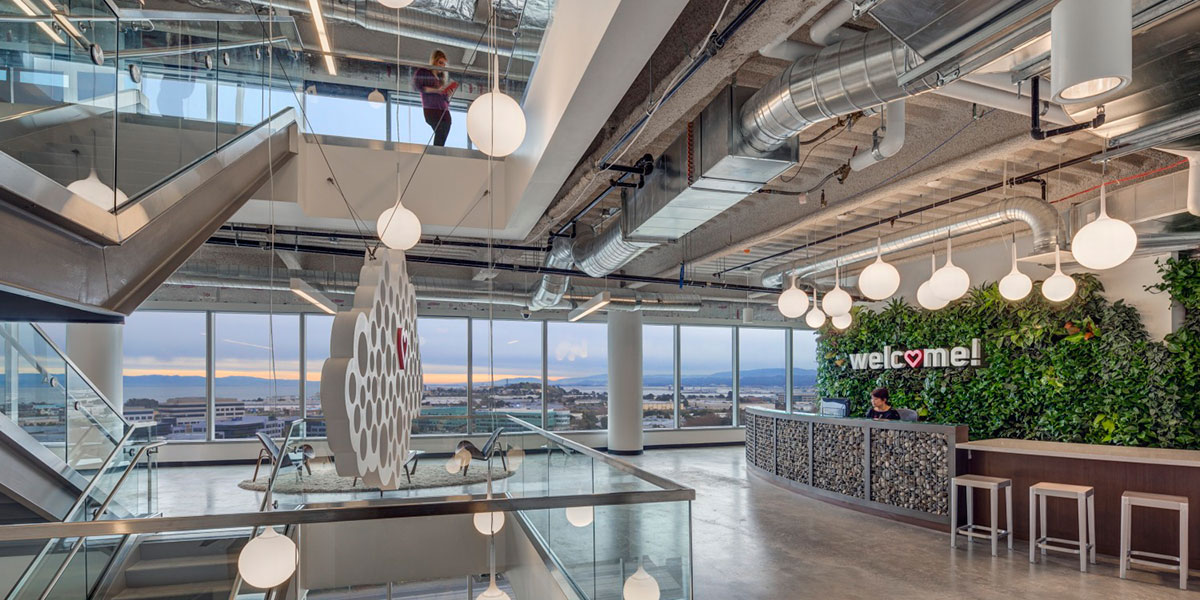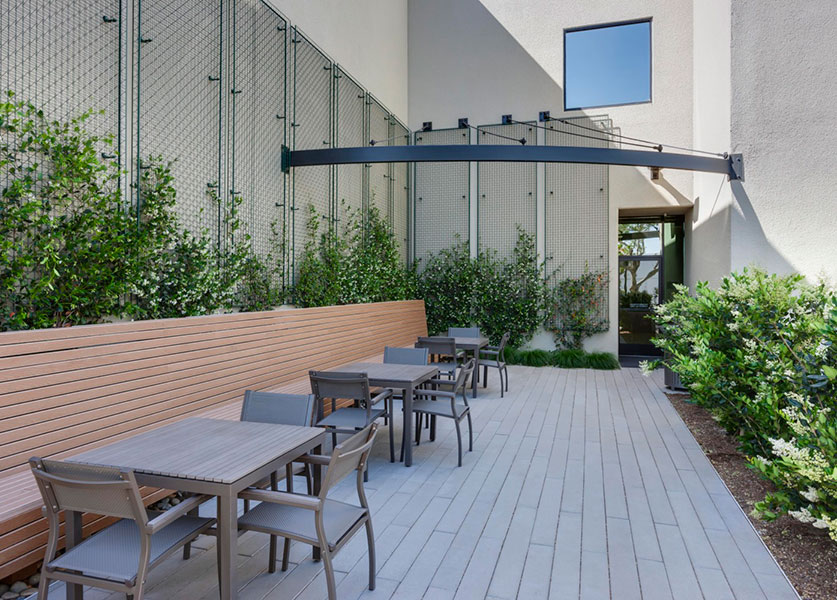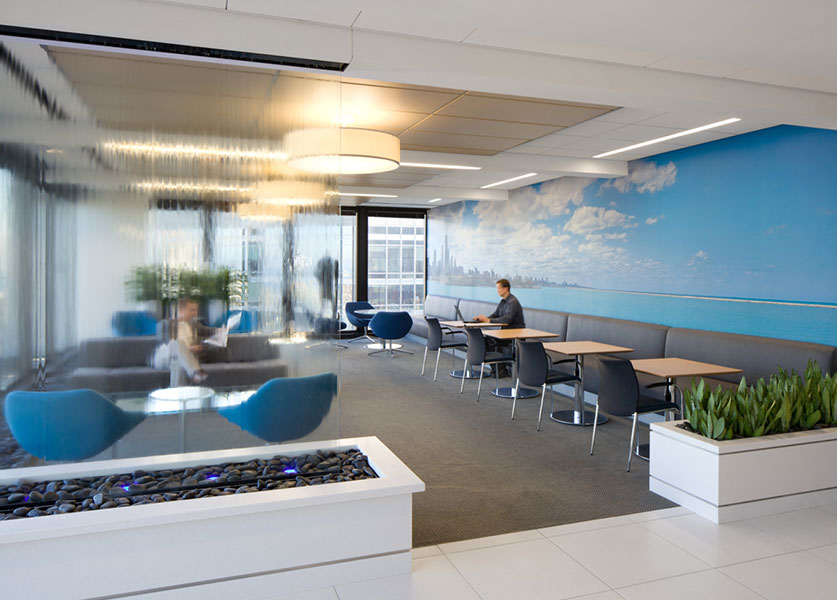A greater focus on keeping building inhabitants healthy is supported through new policies and technologies.

As wellness in interiors grows increasingly important to businesses globally, we see three major global drifts in corporate design that supports human health. First, the WELL Building Standard is now officially available to any project team that wants to pursue it. Second, the advancement of wearable technology will facilitate information mining directly from its occupants, which—overtime–will change the way workplace is designed and managed. And third, there is a renewed interest in biophilia, which addresses humans’ physiological need to be in harmony with the natural world.
The WELL Building Standard is increasing in visibility as designers and clients alike become familiar with this new benchmark for design. Similar in format to LEED and other green building efforts, WELL Building-certified interiors are designed to prescriptive guidelines intended to help people thrive in the built environment. Unlike programs designed to address the health of buildings, the WELL Building Standard addresses elements humans need to survive and flourish, including clean air, clean water, healthy food, natural light, regular activity, physical and mental comfort, and nourishment. The standard encourages conscientious design and fosters the creation of people-centered spaces that are naturally engaging.

Supporting these basic human needs can also help support immune systems. Rather than building controlled, sterile environments intended to eradicate germs—an unrealistic goal for a dynamic workplace in most sectors—designing an environment that embraces human needs will support a healthier workplace. “Wellness in the workplace has to be somewhat preventative,” says Jenny Ruegamer, design director at IA in Seattle. “It’s not about the germs flowing through the air, but keeping people healthy so when exposed to germs they’re strong enough to repel them. As designers it’s our job—whether through lighting, hydration stations, or effective color psychology—to design offices that keep workers free from stress and exhaustion.”
The second thing we will see more of is the integration of wearable technology with building technology. As both the prevalence of personal monitoring devices and demand for responsive environments increases, there is a natural connection to be made here. Imagine an office that knows your preferences and guides you upon arrival to the spot most suitable to your needs, from the brightest room in the building, the quietest area of the floor–whatever parameters you set. As technology advances, your wearables will know what you need before you do.

The integration of wearable technology and the data it generates will also help build a business case for healthful work environments. Our clients must make informed financial decisions about the way their workplace is designed and technology is aiding that effort. “Measuring your data and building a measurable business case is important,” says Ruegamer. “We can’t just design something that you think is making people feel better: In this day and age, you have to be able to prove it.”
The increasing presence of biophilia, typically defined as a bond between humans and other natural systems, is not a new concept. We enjoy, in ways both overt and subtle, our connection with the natural world and we respond to our physical environment. The age-old competition for that coveted corner office isn’t just about a hierarchy: We want the view, the light, the privacy, all of which helps us connect to the natural environment. Biophilia is making a resurgence in the design world, in part due to the points awarded by standards such as the WELL Building standard and the Living Building Challenge. We will continue to see greater emphasis on bringing harmony into the built environment by focusing on occupant health and wellbeing.
